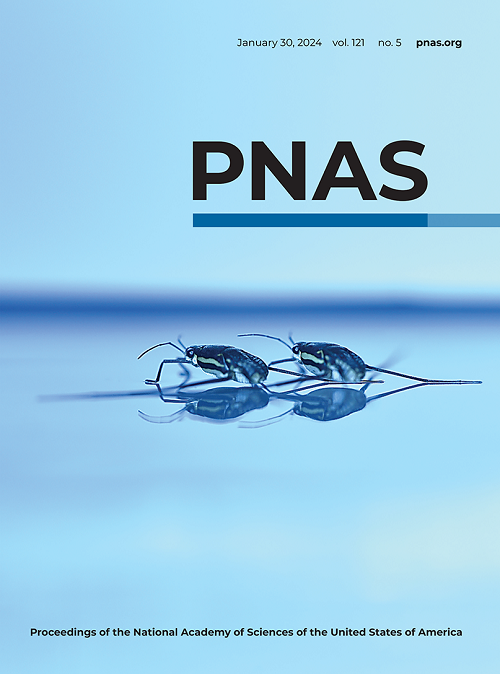Force spectroscopy reveals membrane fluctuations and surface adhesion of extracellular nanovesicles impact their elastic behavior
IF 9.4
1区 综合性期刊
Q1 MULTIDISCIPLINARY SCIENCES
Proceedings of the National Academy of Sciences of the United States of America
Pub Date : 2025-04-18
DOI:10.1073/pnas.2414174122
引用次数: 0
Abstract
The elastic properties of nanoscale extracellular vesicles (EVs) are believed to influence their cellular interactions, thus having a profound implication in intercellular communication. However, accurate quantification of their elastic modulus is challenging due to their nanoscale dimensions and their fluid-like lipid bilayer. We show that the previous attempts to develop atomic force microscopy-based protocol are flawed as they lack theoretical underpinning as well as ignore important contributions arising from the surface adhesion forces and membrane fluctuations. We develop a protocol comprising a theoretical framework, experimental technique, and statistical approach to accurately quantify the bending and elastic modulus of EVs. The method reveals that membrane fluctuations play a dominant role even for a single EV. The method is then applied to EVs derived from human embryonic kidney cells and their genetically engineered classes altering the tetraspanin expression. The data show a large spread; the area modulus is in the range of 4 to 19 mN/m and the bending modulus is in the range of 15 to 33力谱揭示了细胞外纳米囊泡的膜波动和表面粘附对其弹性行为的影响
纳米级细胞外囊泡(ev)的弹性特性被认为影响其细胞间的相互作用,从而对细胞间的通讯具有深远的影响。然而,由于其纳米级尺寸和流体状脂质双分子层,对其弹性模量的精确量化是具有挑战性的。我们表明,先前开发基于原子力显微镜的协议的尝试是有缺陷的,因为它们缺乏理论基础,并且忽略了表面附着力和膜波动所产生的重要贡献。我们开发了一个包含理论框架,实验技术和统计方法的协议,以准确量化电动汽车的弯曲和弹性模量。该方法表明,即使对于单个EV,膜波动也起主导作用。然后将该方法应用于从人类胚胎肾细胞及其基因工程类中提取的电动汽车,改变四蛋白的表达。数据显示差异很大;面积模量为4 ~ 19 mN/m,弯曲模量为15 ~ 33 k bt。令人惊讶的是,通过重复测量,单个EV的数据也显示出其扩散归因于其组成非均质流体膜和热效应。我们的方案揭示了膜蛋白改变对ev弹性模量的影响。
本文章由计算机程序翻译,如有差异,请以英文原文为准。
求助全文
约1分钟内获得全文
求助全文
来源期刊
CiteScore
19.00
自引率
0.90%
发文量
3575
审稿时长
2.5 months
期刊介绍:
The Proceedings of the National Academy of Sciences (PNAS), a peer-reviewed journal of the National Academy of Sciences (NAS), serves as an authoritative source for high-impact, original research across the biological, physical, and social sciences. With a global scope, the journal welcomes submissions from researchers worldwide, making it an inclusive platform for advancing scientific knowledge.

 求助内容:
求助内容: 应助结果提醒方式:
应助结果提醒方式:


